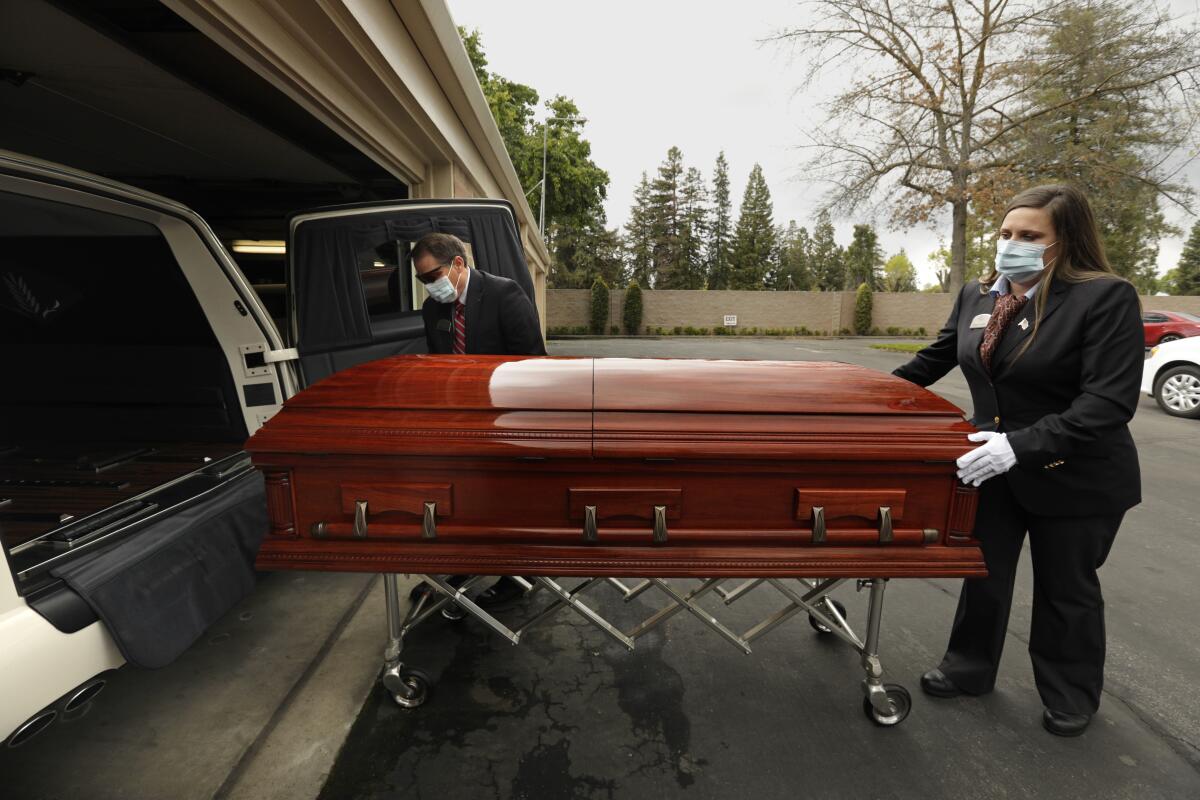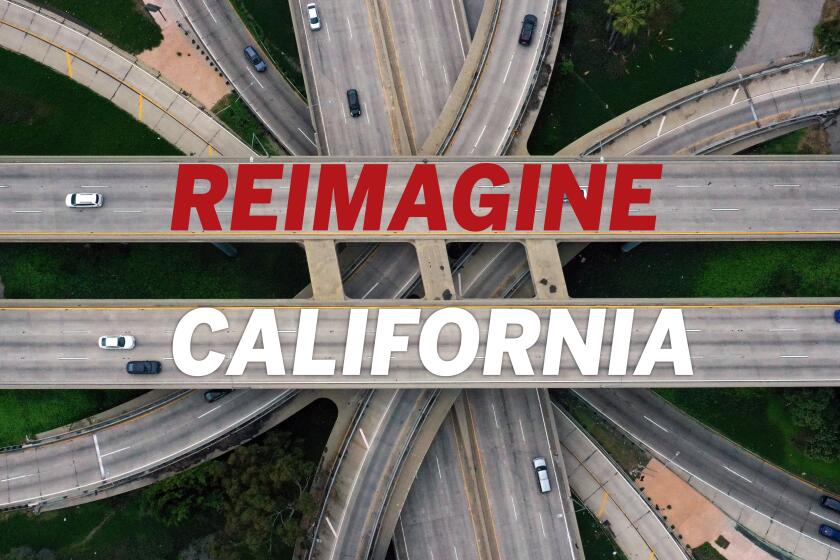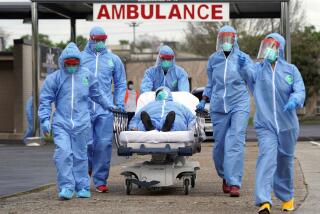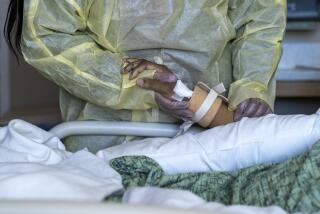Editorial: It’s time to mourn. Let’s not wait for another 100,000 COVID-19 deaths to honor those we’ve lost

This week, the United States is set to pass another sorrowful milestone in the coronavirus pandemic: 100,000 dead from COVID-19.
It bears repeating: One hundred thousand Americans dead since the first known coronavirus death in the U.S. in February. It’s a staggering figure, the equivalent of a Vacaville, Calif., or a Tuscaloosa, Ala., wiped out in just three months.
It’s a number that’s no more or less meaningful than 99,337 or 100,152 to the people who died alone, hooked up to a ventilator in a hospital room or gasping for breath through fluid-filled lungs at home. And it’s certainly not as large a figure as it might have been but for widespread stay-at-home restrictions.
But for those of us left to take stock, it’s an appropriate time to pause and mourn the many people who have died before their time, and the countless more who will be lost before the pandemic is over. The fathers and mothers and sons and daughters. The favorite cousins, dear uncles and aunts. The best friends and personal heroes. The spouses and lovers.
Why mourn at all? People die every day from infections, accidents and violence and we don’t make a big deal about them in any collective fashion. And weren’t most of the victims old and sick and near the end of their lives anyhow?
Here’s why: The coronavirus, unlike the flu or car accidents, is a natural disaster for which we have no defense. It’s effects are no less tragic than a massive deadly earthquake or wildfire, albeit slower moving. If 100,000 people died on a single day from anything, would we even wonder if it was appropriate to mark their passing in some fashion?
And as for the idea that the coronavirus victims would have died soon anyway? Many of the dead were not old or particularly sick. One recent preliminary study (which has yet to be peer reviewed so should be viewed with appropriate skepticism) found that people who died from COVID-19 might have lived at least another decade on average had they not been infected. Think of it: One hundred thousand people who might have lived another 10 or 13 years.
Another sobering data point is the number of additional dead this year. In April, federal data indicated that California was on track for 9% more deaths from all factors this year than its historical average. This suggests there are more coronavirus victims than have been identified.
So why do it now? After three months of stress, death and ugly partisan battles over the smallest coronavirus response, the nation needs the catharsis of a shared moment. Expressing loss is something that unites us all in healing. And we need some healing to get through the months of stress, death and ugly partisan battles to come.
But what is the proper way for the nation to grieve a still-unfolding tragedy? Fly flags at half staff, as they are at federal buildings? Organize a mid-pandemic memorial ceremony with political, cultural and spiritual leaders? Observe a moment of collective silence at some predetermined time and day? Yes. That should do.
Help the Los Angeles Times reimagine what California should look like after the COVID-19 pandemic ends.
More to Read
A cure for the common opinion
Get thought-provoking perspectives with our weekly newsletter.
You may occasionally receive promotional content from the Los Angeles Times.











